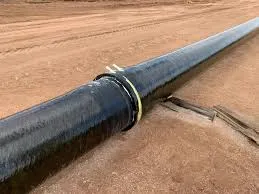
-
 Afrikaans
Afrikaans -
 Albanian
Albanian -
 Amharic
Amharic -
 Arabic
Arabic -
 Armenian
Armenian -
 Azerbaijani
Azerbaijani -
 Basque
Basque -
 Belarusian
Belarusian -
 Bengali
Bengali -
 Bosnian
Bosnian -
 Bulgarian
Bulgarian -
 Catalan
Catalan -
 Cebuano
Cebuano -
 China
China -
 China (Taiwan)
China (Taiwan) -
 Corsican
Corsican -
 Croatian
Croatian -
 Czech
Czech -
 Danish
Danish -
 Dutch
Dutch -
 English
English -
 Esperanto
Esperanto -
 Estonian
Estonian -
 Finnish
Finnish -
 French
French -
 Frisian
Frisian -
 Galician
Galician -
 Georgian
Georgian -
 German
German -
 Greek
Greek -
 Gujarati
Gujarati -
 Haitian Creole
Haitian Creole -
 hausa
hausa -
 hawaiian
hawaiian -
 Hebrew
Hebrew -
 Hindi
Hindi -
 Miao
Miao -
 Hungarian
Hungarian -
 Icelandic
Icelandic -
 igbo
igbo -
 Indonesian
Indonesian -
 irish
irish -
 Italian
Italian -
 Japanese
Japanese -
 Javanese
Javanese -
 Kannada
Kannada -
 kazakh
kazakh -
 Khmer
Khmer -
 Rwandese
Rwandese -
 Korean
Korean -
 Kurdish
Kurdish -
 Kyrgyz
Kyrgyz -
 Lao
Lao -
 Latin
Latin -
 Latvian
Latvian -
 Lithuanian
Lithuanian -
 Luxembourgish
Luxembourgish -
 Macedonian
Macedonian -
 Malgashi
Malgashi -
 Malay
Malay -
 Malayalam
Malayalam -
 Maltese
Maltese -
 Maori
Maori -
 Marathi
Marathi -
 Mongolian
Mongolian -
 Myanmar
Myanmar -
 Nepali
Nepali -
 Norwegian
Norwegian -
 Norwegian
Norwegian -
 Occitan
Occitan -
 Pashto
Pashto -
 Persian
Persian -
 Polish
Polish -
 Portuguese
Portuguese -
 Punjabi
Punjabi -
 Romanian
Romanian -
 Russian
Russian -
 Samoan
Samoan -
 Scottish Gaelic
Scottish Gaelic -
 Serbian
Serbian -
 Sesotho
Sesotho -
 Shona
Shona -
 Sindhi
Sindhi -
 Sinhala
Sinhala -
 Slovak
Slovak -
 Slovenian
Slovenian -
 Somali
Somali -
 Spanish
Spanish -
 Sundanese
Sundanese -
 Swahili
Swahili -
 Swedish
Swedish -
 Tagalog
Tagalog -
 Tajik
Tajik -
 Tamil
Tamil -
 Tatar
Tatar -
 Telugu
Telugu -
 Thai
Thai -
 Turkish
Turkish -
 Turkmen
Turkmen -
 Ukrainian
Ukrainian -
 Urdu
Urdu -
 Uighur
Uighur -
 Uzbek
Uzbek -
 Vietnamese
Vietnamese -
 Welsh
Welsh -
 Bantu
Bantu -
 Yiddish
Yiddish -
 Yoruba
Yoruba -
 Zulu
Zulu
grp water tank
Understanding GRP Water Tanks A Comprehensive Overview
Glass Reinforced Plastic (GRP) water tanks have gained immense popularity in recent years due to their durability, versatility, and cost-effectiveness. These tanks are made from a composite material that combines glass fiber and resin, offering a reliable solution for storing water for various applications, including agricultural, industrial, and domestic use.
Structure and Composition
GRP water tanks are lightweight yet incredibly strong, capable of withstanding extreme weather conditions. The primary components of a GRP tank include the resin, glass fiber, and sometimes additives that enhance specific properties. The resin serves as a binding agent, while the glass fibers provide structural integrity and resistance to stress. This combination results in a tank that is not only robust but also resistant to corrosion, rust, and decay, making it an ideal choice for water storage.
Moreover, the manufacturing process of GRP tanks often involves techniques like hand layup or spray-up, ensuring consistency and quality in the final product. The seamless construction minimizes the risk of leaks and weak points, which are common issues in traditional materials like steel or concrete.
Advantages of GRP Water Tanks
One of the primary advantages of GRP water tanks is their resistance to environmental factors. Unlike metal tanks, GRP tanks do not corrode, ensuring the quality of stored water remains uncontaminated over time. Additionally, they are far lighter than their concrete or steel counterparts, making them easier to transport and install. This weight advantage translates to lower installation costs and reduced labor requirements.
Another significant benefit is their high thermal insulation properties. GRP tanks help maintain the temperature of the water, which is particularly advantageous in regions with extreme temperature fluctuations. This feature not only improves the efficiency of water storage but also protects the water from potential contamination by external factors.
grp water tank

Furthermore, GRP water tanks are customizable. They can be manufactured in various sizes and shapes to meet specific requirements. Whether for residential use, commercial buildings, or agricultural projects, the flexibility in design allows users to optimize their water storage solutions.
Applications
GRP water tanks are used across diverse sectors. In residential settings, they serve as overhead tanks, providing a steady supply of water for daily needs. In commercial buildings, they are utilized for fire suppression systems and irrigation. The agricultural sector also relies heavily on GRP tanks for storing water for livestock or irrigation, showcasing their versatility.
The industrial sector benefits from GRP tanks as well, as they are often used to store chemical and wastewater solutions. Their resistance to corrosion makes them particularly suited for challenging environments where traditional materials would fail.
Maintenance and Lifespan
Maintenance of GRP water tanks is straightforward. Regular inspections can prevent potential issues, such as algae growth or sediment buildup. Cleaning can be performed with standard cleaning agents, ensuring the water remains potable. When well-maintained, GRP tanks can have a lifespan of over 30 years, providing long-term value for users.
Conclusion
In conclusion, GRP water tanks present a modern solution for water storage needs across various applications. Their durability, resistance to corrosive elements, and customizable nature make them an attractive option in today’s market. As water scarcity becomes an increasingly pressing issue globally, the role of efficient and reliable water storage solutions, like GRP tanks, will continue to grow in importance. Whether for residential, commercial, or agricultural use, GRP water tanks offer a future-proof solution that stands the test of time.









